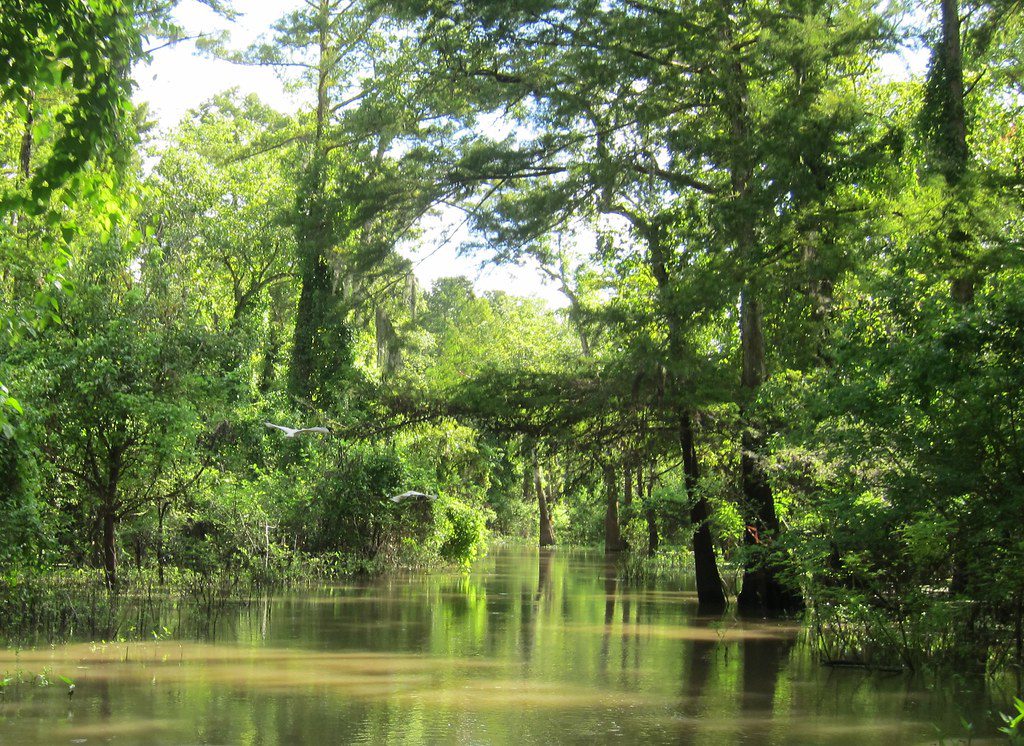Located in south central Louisiana, Atchafalaya Basin is a combination of wetlands and river delta area where the Atchafalaya River and the Gulf of Mexico converge. The river stretches from near Simmesport in the north through parts of eight parishes to the Morgan City southern area.
The basin contains about 70% forest habitat and about 30% marsh and open water. It contains the largest contiguous block of forested wetlands remaining (about 35%) in the lower Mississippi River valley and the largest block of floodplain forest in the United States. Best known for its iconic cypress-tupelo swamps, at 260,000 acres (110,000 ha), this block of forest represents the largest remaining contiguous tract of coastal cypress in the United States.

The Atchafalaya Basin has a long relationship with the Mississippi River throughout the Holocene epoch, and the geology of the modern basin is a direct manifestation of that relationship. The Atchafalaya Basin has been part of three historic depositional lobes (Sale-Cypremort, Teche, and Lafourche lobes) of the Mississippi River Delta Plain that formed south Louisiana, and active delta lobe development is currently occurring at the mouth of the Atchafalaya River and Wax Lake Outlet. The geology of the current basin has been driven by flows of Atchafalaya River water and sediment that flowed into open water areas through relict Mississippi River distributary channels.
According to louisiana-destinations.com, this is some interesting facts about the Atchafalaya Basin:
- It’s larger than the Florida Everglades.
- It’s five times more productive than any other river basin in North America.
- About 65 species of reptiles and amphibians inhabit the Basin.
- Over 250 known species of birds fly in the Basin.
- Other species of animals found in the area include the Florida panther, black bear, bobcat, nutria, mink, fox, muskrat, beaver, otter and raccoon.
- The Basin is home to the largest nesting concentration of bald eagles in the south central United States.
- There are more than 100 different species of fish and aquatic life in the Basin.
- The Basin has an estimated average annual commercial harvest of nearly 22 million pounds of crawfish.
- The Basin contains the largest contiguous bottomland hardwood forest in North America and is the largest overflow alluvial hardwood swamp in the United States.
According to en.wikipedia; louisiana-destinations.com. Source of photos: internet








